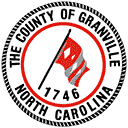Heart Health Awareness
go.ncsu.edu/readext?983671
en Español / em Português
El inglés es el idioma de control de esta página. En la medida en que haya algún conflicto entre la traducción al inglés y la traducción, el inglés prevalece.
Al hacer clic en el enlace de traducción se activa un servicio de traducción gratuito para convertir la página al español. Al igual que con cualquier traducción por Internet, la conversión no es sensible al contexto y puede que no traduzca el texto en su significado original. NC State Extension no garantiza la exactitud del texto traducido. Por favor, tenga en cuenta que algunas aplicaciones y/o servicios pueden no funcionar como se espera cuando se traducen.
Português
Inglês é o idioma de controle desta página. Na medida que haja algum conflito entre o texto original em Inglês e a tradução, o Inglês prevalece.
Ao clicar no link de tradução, um serviço gratuito de tradução será ativado para converter a página para o Português. Como em qualquer tradução pela internet, a conversão não é sensivel ao contexto e pode não ocorrer a tradução para o significado orginal. O serviço de Extensão da Carolina do Norte (NC State Extension) não garante a exatidão do texto traduzido. Por favor, observe que algumas funções ou serviços podem não funcionar como esperado após a tradução.
English
English is the controlling language of this page. To the extent there is any conflict between the English text and the translation, English controls.
Clicking on the translation link activates a free translation service to convert the page to Spanish. As with any Internet translation, the conversion is not context-sensitive and may not translate the text to its original meaning. NC State Extension does not guarantee the accuracy of the translated text. Please note that some applications and/or services may not function as expected when translated.
Collapse ▲February is Heart Health Awareness Month. To highlight the importance of heart health, this article features a recipe from the American Heart Association. All ingredients in this recipe are considered Supplemental Nutrition Assistance Program (SNAP)/Electronic Benefits Transfer (EBT) friendly. For a full list of all food categories that are SNAP eligible, contact the More In My Basket program team with the information. Recipients of the Supplemental Nutrition Assistance Program may also be able to purchase select ingredients at Farmers’ Markets that accept the EBT card. Contact your local market and ask if SNAP benefits are accepted. For questions about the Supplemental Nutrition Assistance Program or to receive application assistance contact the More In My Basket staff: Visit: morefood.org; English Toll Free: 1-855-240-1451
Below is a delicious SNAP-friendly recipe from the American Heart Association. For more information on our Food for Thought programs, activities and recipes, check us out online.
Chickpea Salad with Tomatoes and Cucumber
From Heart.org
- 5 oz canned, no-salt-added or lower-sodium chickpeas (garbanzo beans), drained, rinsed
- 1 cup chopped, fresh tomatoes (any type)
- 1 cucumber (chopped)
- 2 stalk celery (chopped)
- 1/4 small red or yellow onion (sliced)
- 1/2 cup chopped, fresh cilantro
- 1 Tbsp extra virgin olive oil or canola
- 1/2 Tbsp balsamic vinegar or lemon juice
- 1/2 teaspoon ground cumin
- 1/4 teaspoon sweet paprika
Add all the ingredients into a large bowl. Stir to combine and serve.
Nutrition Facts: 168 calories, 4.5g fat, 48 mg sodium, 4g sugars, 6g fiber, 25g carbohydrates, 7g protein




